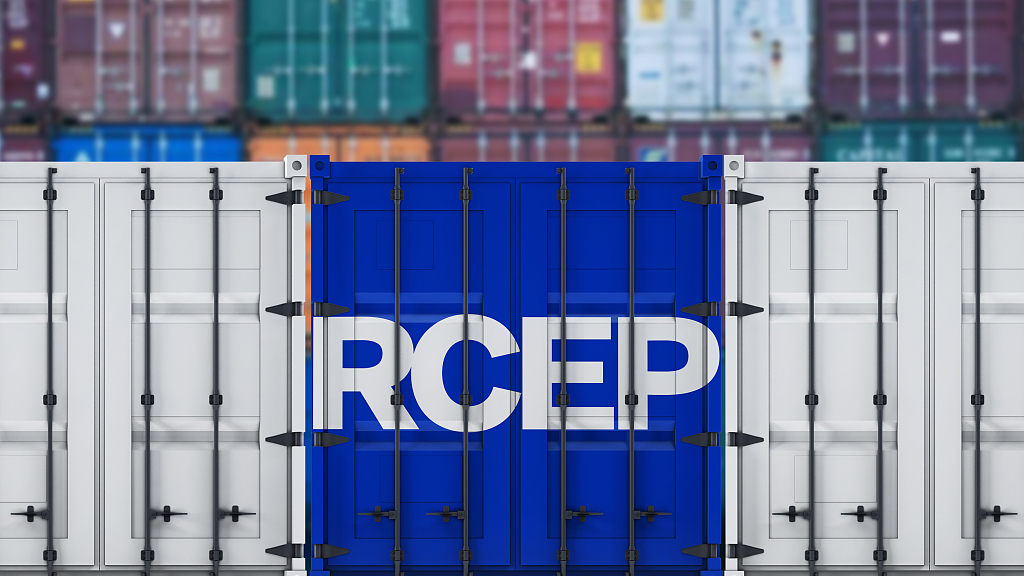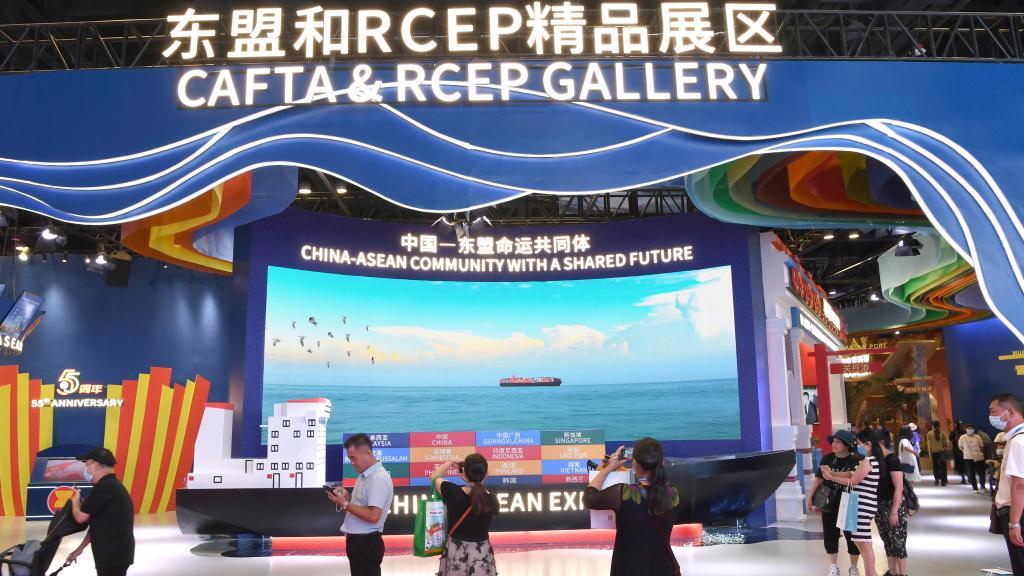
Editor's note: Daryl Guppy, a special commentator on current affairs for CGTN, is an international financial technical analysis expert. He has provided weekly Shanghai Index analysis for mainland Chinese media for more than a decade. Guppy appears regularly on CNBC Asia and is known as "The Chart Man." He is a former national board member of the Australia China Business Council. The article reflects the author's opinions and not necessarily those of CGTN.
The full implementation of the Regional Comprehensive Economic Partnership (RCEP) is completed with the Philippines' official entry on June 2. RCEP was inaugurated in 2012 and its successful full activation is testament to the effectiveness of the Association of Southeast Asian Nations (ASEAN)'s method of managing regional cooperation harmoniously.
This will strongly support the free trade and multilateral trading system, keep the regional industrial chain and supply chain stable, and boost regional and global economic recovery and development. The full operating force of RCEP brings rapid and immediate benefits to the physical trade structures in the Asia-Pacific market.
RCEP is the world's largest free trade agreement covering nearly a third of the global population and about 30 percent of its global gross domestic product. The agreement resolves the complexity of Asian trade relationships by immediately eliminating tariffs and quotas on 65 percent of goods traded within the bloc, increasing to 90 percent over time.
A key benefit of the pact is its common "rules of origin" framework. RCEP exporters will generally only need to source at least 40 percent of inputs from within the bloc for their final goods to qualify for tariff preferences when exported to other members.
The agreement recognizes the internationalization of trade and the global connectivity of unfettered manufacturing supply chains. The agreement stands as a counterbalance to those forces which wish to use sanctions, secondary boycotts and punitive extra-territorial measures to restrict manufacturing supply chains. It counters America's unilateralism and ambitions to force an Asian decoupling from China.
Whilst these immediate benefits are important, RCEP also sets the framework for the longer term future of trade development in terms of standards and protocols.
Unleashing the full dividends of RCEP comes from the deepening of regional economic and trade cooperation in what can loosely be called the digital economy. The groundwork for this cooperation is contained in Chapters 6 and 12 of the agreement. The adoption of common protocols and standards for the digital economy are essential for promoting regional economic recovery and sustaining growth. It is the digital economy in all its aspects that has the power to unify the economic potential of the region by removing the frictions in cross-border trading, transactions and trade settlement.

The CAFTA and RCEP Gallery during the 19th China-ASEAN Expo, Guangxi Zhuang Autonomous Region, China, September 19, 2022. /Xinhua
The CAFTA and RCEP Gallery during the 19th China-ASEAN Expo, Guangxi Zhuang Autonomous Region, China, September 19, 2022. /Xinhua
Taking a longer term perspective, the most important RCEP dividend comes from the development of an agreed digital infrastructure amongst the RCEP members. Agreements about common operating standards, cross-border trade protocols and trade settlement processes will deliver the largest benefits to industries and consumers.
This will be a future challenge if some countries like Australia and Canada persist with supporting the American approach of rejecting any standards and trade protocols developed by China. Alternatively, this is also a great opportunity for these countries to show a cooperative approach by accepting the common standards approved by RCEP members.
RCEP is a triumph of inclusive consensus decision-making, using the ASEAN model. Its operation stands in stark contrast to the confrontational model often adopted in Western-dominated negotiations. It highlights the merits of ASEAN's nuanced regional diplomacy when compared with Western adversarial traditions. This is the important difference between RCEP and the Comprehensive and Progressive Agreement for Trans-Pacific Partnership (CPTPP), which selectively excludes some potential members on political grounds.
The full potential of the CPTPP is hampered by poison pill provisions, which give the United States veto powers by threatening the termination of other trade agreements under the terms of the North American Free Trade Agreement. This hegemonic threat undermines the efficiency of the CPTPP in a way that the structure and operation of RCEP does not. There are no political barriers to participation in RCEP and this points the way to a future of truly free trade as distinct from more restrictive trade pacts.
The scope of the RCEP provides a strategic advantage that does not depend on integration with the CPTPP. The idea of ASEAN Centrality has underpinned the agreement since its inception. The agreement's guiding principles and objectives "recognize ASEAN Centrality in the emerging regional economic architecture." This codifies a position of strength based on the economic size of its membership. RCEP is an open agreement that does not exclude any country on political grounds, and that is its strategic strength.
The weakness of the CPTPP lies in its deliberate design to exclude China. Ultimately, this weakens its influence because membership offers only a marginal benefit whereas engagement with China through RCEP recognizes the global trading reality. China's inclusion would enhance the relevance and authority of the CPTPP.
The full activation of RCEP is an important way-point marking the transition of geo-economic power as it moves decisively to Asia. This is the true strategic dividend.
(If you want to contribute and have specific expertise, please contact us at opinions@cgtn.com. Follow @thouse_opinions on Twitter to discover the latest commentaries in the CGTN Opinion Section.)